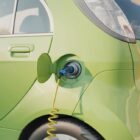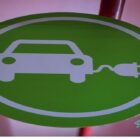What You Need to Know About EV DC Fast Charger Costs
The number of electric vehicles purchased by consumers has been steadily climbing for some time now. Because more and more electric vehicles are being put into circulation, so, it’s a no-brainer that we will need reliable charging stations for electric vehicles.
This bodes well for entrepreneurs and would-be businesspeople who are eager to break into new markets.
Yet, many people have been dissuaded from getting into this industry due to the cost of installing electric vehicle charging stations and the general lack of information.
Of course, you cannot make your choice just based on what others say.
There are different factors that you need to consider before you reach any conclusion. And in this post, we shall discuss with you the things that you need to know about EV DC Fast Charger Costs.
Let’s get started….
DC Fast Charging Stations
The need for DC fast charging stations is quickly growing in response to the widespread adoption of electric vehicles (EVs). On-site DC fast chargers, also known as Level 3 chargers, are becoming increasingly popular among a variety of commercial and industrial establishments, including vehicle dealerships, fleet operators, and so on.
If you are ready to make the significant initial expenditure, installing a charging station for electric vehicles might turn out to be a rewarding business venture.
DC fast chargers are highly desirable because of the positive effects they have on user experience, customer satisfaction, and environmental friendliness.
EV DC Fast Charger Costs
The cost of buying a DC fast charger and/or having one installed is determined by a number of different elements. The following are the primary aspects to think about:
Charger Output Level
There are three different levels of electric vehicle charging, including Level 1, Level 2, and Level 3. There are substantial distinctions between each of the tiers of pricing. Yet, the charger’s power output and charging speed increase with increasing Level.
The highest output units can cost more than INR 12,50,000. There are certain chargers that are capable of providing service to two vehicles at the same time, while others may require extra dispensers or units in order to provide that level of convenience.
Existing Electrical Infrastructure
In order to acquire a DC fast charger for your location, you will need to take into account the existing electrical infrastructure at your location. Although DC fast chargers offer a quicker charge, they also demand a significant amount of additional power.
In order to work effectively, the vast majority of DC fast chargers require 380-400 V phase power.
There are a few DC fast chargers that are capable of operating on single phase or 208V/3-Phase, but the output of these chargers is limited to 50 kW or less.
And to install a high-power DC fast charger, you may need anywhere between 200 – 1000/v phase power.
Location
Where you want to locate your DC power station also plays a crucial role. The closer you are to existing electrical infrastructure, the lower your costs will be. Distance from the electrical panel increases the likelihood of cutting through concrete or walls, which raises project costs.
Operational Cost
Upkeep of hardware, software, infrastructure, and manpower will also be considered while you install EV DC Fast Charger. In addition, additional costs may be incurred if the utility company needs to be involved in order to bring additional power to the location.
So, all in all, it will cost you somewhere around 50 – 60 lakhs to set up an electric vehicle charging station, with one of each type of charger, on leased land. Although government subsidies may help with costs, entering this industry is not cheap.
If you’re looking for a company that could help you set up an EV DC fast charging station, then contact us. We can help you with everything you need to know about setting up your own station. Also, we will provide you with additional information regarding the government subsidies for which you could be eligible.
Know that selecting and installing DC quick chargers calls for an elevated level of both understanding and competence. So, to be sure that you’re on the right path, it’s crucial to have professionals by your side.
We at electriva charging specialize in DC fast chargers and can provide you with end-to-end solutions to meet all your needs.


